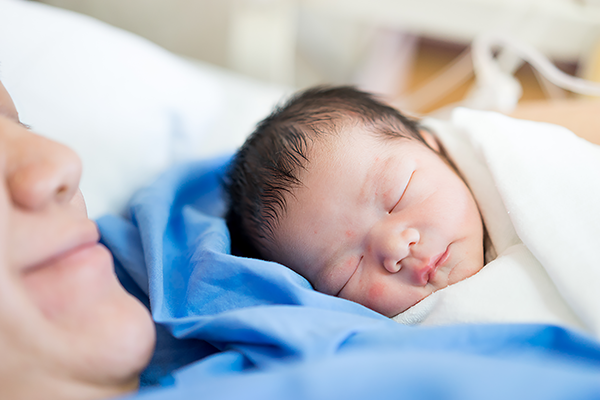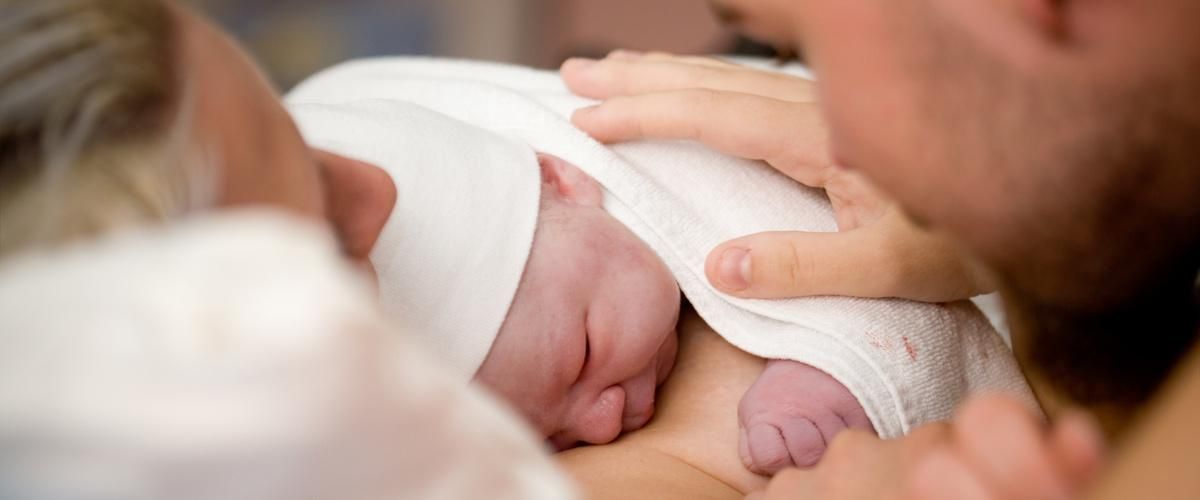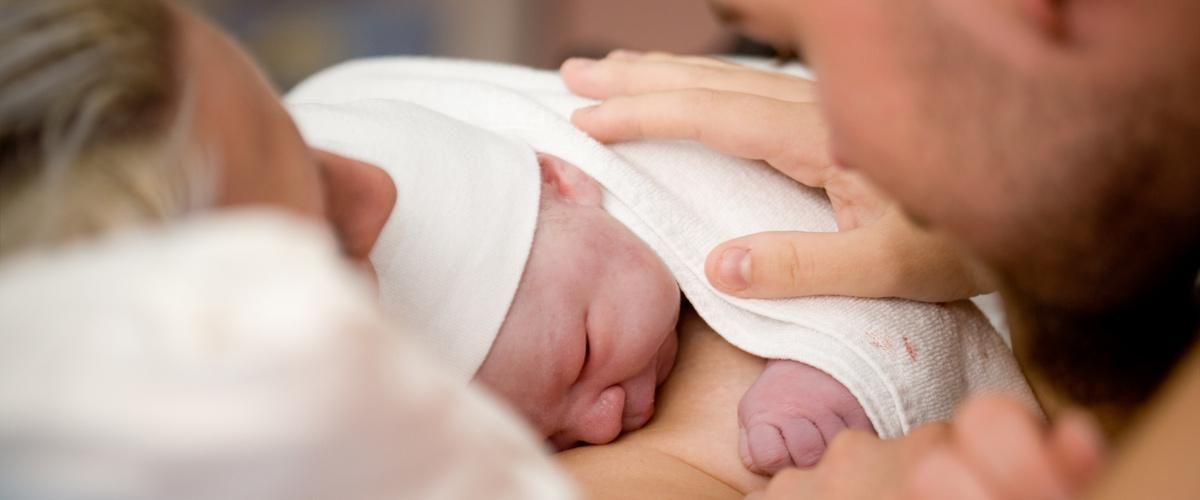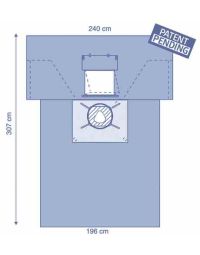The humanisation of caesarean sections is an approach that aims to provide mothers and babies with a more respectful, intimate experience during the surgical procedure. This implies taking into account the needs and wishes of the mother, allowing her to actively take part, encouraging immediate skin-to-skin contact and fostering a peaceful and comfortable environment.
Skin-to-skin contact is the practice of placing a naked newborn baby on the mother’s bare chest or abdomen immediately after birth. Although it is most commonly associated with vaginal births, it can also be performed following a caesarean section, offering numerous benefits for both mother and baby.
Benefits of skin-to-skin contact
Skin-to-skin contact between a mother and her newborn provides numerous benefits, particularly the following:
- Promotes an emotional connection between mother and baby. By placing the newborn on the mother’s chest, an intimate and special connection is formed, helping to build a bond from the very first moments of life. This can have a positive impact on the baby’s long-term emotional and social development.
- Favours physiological adaptation to extra-uterine life during the newborn’s sensitive period, leading to improved cerebral organisation and the motor system. The WHO stresses the vital importance of this practice, especially for underweight or premature babies, as it increases the newborn’s chances of survival.
- Supports the newborn’s breathing and assists in regulating body temperature. By being in direct contact with the mother, the baby can benefit from the mother’s body warmth to maintain a stable temperature and save energy. This is especially important in the first minutes and hours after birth, when the baby is adapting to the new environment outside the uterus.
- Favours breastfeeding. Studies have shown that when skin-to-skin contact is made immediately after birth, it makes it easier to begin breastfeeding. The baby is more likely to instinctively look for and find the breast, promoting a good latch and suction. Skin-to-skin contact also helps to stimulate the mother’s breastmilk production and promotes long-term production.
- Less stress and pain for both mother and baby. Physical contact and the mother’s smell can help to calm a newborn and reduce crying. Furthermore, skin-to-skin contact releases hormones such as oxytocin, known as the ‘love hormone’, that can help to reduce stress and promote a feeling of well-being for the mother—by improving her uterine contractility and colostrum ejection—as well as the baby.
Implementation of skin-to-skin contact
As discussed, skin-to-skin contact during a caesarean section can provide several benefits to both mother and baby. It is important for healthcare professionals to encourage this practice during caesarean sections to provide the best possible care for mothers and their babies.
In light of the above benefits, Medline has collaborated with key opinion leaders to develop evidence-based solutions that allow more mothers to enjoy skin-to-skin contact, even in special circumstances such as caesarean births. After two years of development, Medline has created the OPS™ Essential Skin-to-Skin Caesarean Drape, providing safe skin-to-skin contact while the mother and baby are in the operating theatre. If you would like to find out more about Medline’s Skin-to-Skin Caesarean Drape, see our online catalogue.


The caesarean drape has been well-received by healthcare professionals and patients. So much so that at the ANECORM Congress in 2022, the Spanish Association for the Coordination of Material Resources (Asociación Española Coordinadora de Recursos Materiales) awarded Medline for the most relevant single-use healthcare technology product of 2022 with the Skin-to-Skin Caesarean Drape.


Cristina Urosa
Junior Product Manager Proxima, SPT & Invisishield
Cristina lives in Madrid and is passionate about reading, personal growth and walks in nature. She enjoys helping others to achieve their goals. Before joining Medline, she worked as a surgical nurse for 18 years. Learn more about her on LinkedIn.
References:
1. Moore ER, Bergman N, Anderson GC, Medley N. Early skin-to-skin contact for mothers and their healthy newborn infants. Cochrane Database Syst Rev. 2016 Nov 25;11:CD003519. Review
2. Stevens J, Schmied V, Burns E, Dahlen H. Immediate or early skin-to-skin contact after a Caesarean section: a review of the literature. Matern Child Nutr. 2014 Oct;10(4):456-73
3. Grupo de trabajo de la Guía de Práctica Clínica sobre atención al parto normal. Guía de Práctica Clínica sobre la atención al parto normal. Plan de Calidad para el Sistema Nacional de Salud del Ministerio de Sanidad y Política Social. Agencia de Evaluación de Tecnologías Sanitarias del País Vasco (OSTEBA). Agencia de Evaluación de Tecnologías Sanitarias de Galicia (Avalia-t). 2010. Guías de Práctica Clínica en el SNS: OSTEBA Nº 2009/01
4. Grupo de trabajo de la Guía de Práctica Clínica sobre lactancia materna. Guía de Práctica Clínica sobre lactancia materna. Ministerio de Sanidad, Servicios Sociales e Igualdad; Agencia de Evaluación de Tecnologías Sanitarias del País Vasco-OSTEBA, 2017. Guías de Práctica Clínica en el SNS



